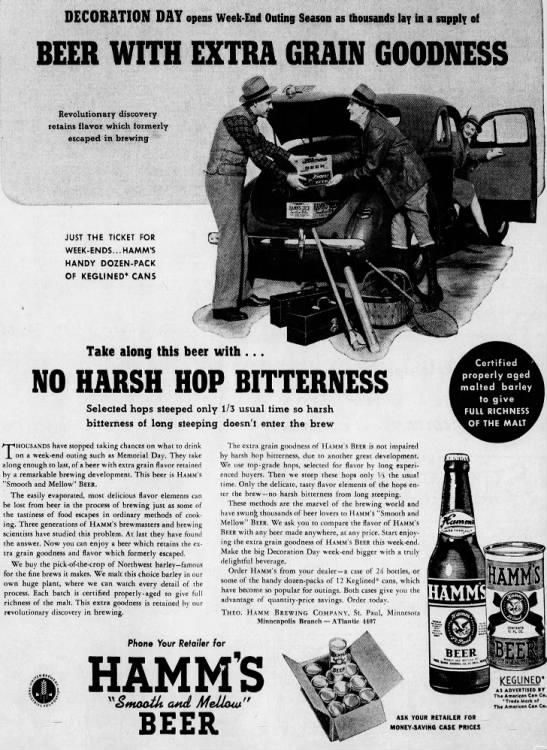
Saturday’s ad is for “Hamm’s,” from 1941. This ad was made for Hamm’s Brewing, which was founded in 1865 by Theodore Hamm in St. Paul, Minnesota. At its peak, it was the 5th largest brewery in America, and operated facilities in five cities, including San Francisco, L.A., Baltimore and Houston, in addition to the original brewery in Minnesota. This one features people loading up the trunk of their car with Hamm’s beer, with the tagline “Beer with Extra Grain Goodness” followed by “Take along this beer with … No Harsh Hop Bitterness.”

